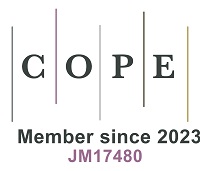REFERENCES
1. World Resources Forum. Making Natural Resource Governance Fit for the 21st Century. 2019. https://www.wrforum.org/resources/making-natural-resource-governance-fit-for-the-21st-century/ (accessed 2025-09-18).
2. UNEP: United Nations Environment Programme, International Resource Panel. Global resources outlook 2024: bend the trend - pathways to a liveable planet as resource use spikes. Nairobi; 2024. https://www.unep.org/resources/Global-Resource-Outlook-2024 (accessed 2025-09-18).
4. Ali, S. H.; Franks, D. M.; de Oliveira, J. A. P.; et al. A global minerals trust could prevent inefficient and inequitable protectionist policies. Science 2025, 388, 1028-30.
5. Erdoğan, S.; Çakar, N. D.; Ulucak, R.; et al. The role of natural resources abundance and dependence in achieving environmental sustainability: evidence from resource-based economies. Sustainable. Development. 2021, 29, 143-54.
6. Kovanda, J. Raw material consumption or total material consumption? Environ. Monit. Assess. 2020, 192, 362.
7. Ulucak, R.; Koçak, E.; Erdoğan, S.; Kassouri, Y. Investigating the non-linear effects of globalization on material consumption in the EU countries: evidence from PSTR estimation. Resources. Policy. 2020, 67, 101667.
8. Weinzettel, J.; Kovanda, J. Structural decomposition analysis of raw material consumption: the case of the Czech Republic. J. Ind. Ecol. 2011, 15, 893-907.
9. Milanez, B.; Ali, S. H.; de Oliveira, J. A. P. Mapping industrial disaster recovery: Lessons from mining dam failures in Brazil. Extr. Ind. Soc. 2021, 8, 100900.
10. Baninla, Y.; Lu, Y.; Zhang, Q.; et al. Material use and resource efficiency of African sub-regions. J. Clean. Prod. 2020, 247, 119092.
11. Steinberger, J. K.; Krausmann, F.; Eisenmenger, N. Global patterns of materials use: a socioeconomic and geophysical analysis. Ecol. Econ. 2010, 69, 1148-58.
12. Zhang, C.; Chen, W.; Liu, G.; Zhu, D. Economic growth and the evolution of material cycles: an analytical framework integrating material flow and stock indicators. Ecol. Econ. 2017, 140, 265-74.
13. United Nations (UN). Transforming our world: the 2030 Agenda for Sustainable Development (A/RES/70/1). 2015. https://sdgs.un.org/2030agenda (accessed 2025-09-18).
14. Kemp-benedict, E. Dematerialization, decoupling, and productivity change. Ecol. Econ. 2018, 150, 204-16.
15. Kuznets, S. Economic growth and income inequality. Am. Econ. Rev. 1955, 45, 1-28. https://assets.aeaweb.org/asset-server/files/9438.pdf (accessed 2025-09-25).
16. Grossman, G. M.; Krueger, A. B. Economic growth and the environment. Q. J. Econ. 1995, 110, 353-77.
17. Stern, D. I. The rise and fall of the environmental Kuznets curve. World. Dev. 2004, 32, 1419-39.
18. Focacci, A. Empirical relationship between total consumption-GDP ratio and per capita income for different metals of a series of industrialised nations. Int. J. Environ. Technol. Manag. 2005, 5, 347.
19. Malenbaum, W. World demand for raw materials in 1985 and 2000. New York: McGraw-Hill; 1978. https://archive.org/details/worlddemandforra0000male (accessed 2025-09-18).
20. Grabarczyk, P.; Wagner, M.; Frondel, M.; Sommer, S. A cointegrating polynomial regression analysis of the material kuznets curve hypothesis. Resources. Policy. 2018, 57, 236-45.
21. Jaunky, V. C. Does a material Kuznets Curve exist for copper? Econ. Papers. A. J. Appl. Econ. Policy. 2014, 33, 374-90.
22. Jaunky, V. C. Is there a material Kuznets curve for aluminium? Resources. Policy. 2012, 37, 296-307.
23. Wårell, L. Trends and developments in long-term steel demand-the intensity-of-use hypothesis revisited. Resour. Policy. 2014, 39, 134-43.
24. Kassouri, Y.; Alola, A. A.; Savaş, S. The dynamics of material consumption in phases of the economic cycle for selected emerging countries. Resources. Policy. 2021, 70, 101918.
25. Shao, Q.; Schaffartzik, A.; Mayer, A.; Krausmann, F. The high ‘price’ of dematerialization: A dynamic panel data analysis of material use and economic recession. J. Clean. Prod. 2017, 167, 120-32.
26. Mukherjee, P. K.; Das, B.; Bhardwaj, P. K.; et al. Socio-economic sustainability with circular economy - an alternative approach. Sci. Total. Environ. 2023, 904, 166630.
27. Abdirahman, A. A.; Asif, M.; Mohsen, O. Circular economy in the renewable energy sector: a review of growth trends, gaps and future directions. Energy. Nexus. 2025, 17, 100395.
28. Xie, H.; Ahmad, T.; Zhang, D.; Goh, H. H.; Wu, T. Community-based virtual power plants’ technology and circular economy models in the energy sector: a techno-economy study. Renew. Sustain. Energy. Rev. 2024, 192, 114189.
29. Tiwari, S.; Si, Mohammed. K. Unraveling the impacts of linear economy, circular economy, green energy and green patents on environmental sustainability: empirical evidence from OECD countries. Gondwana. Res. 2024, 135, 75-88.
30. Hettige, H.; Mani, M.; Wheeler, D. Industrial pollution in economic development: the environmental Kuznets curve revisited. J. Dev. Econ. 2000, 62, 445-76.
31. Bilgili, F.; Nathaniel, S. P.; Kuşkaya, S.; Kassouri, Y. Environmental pollution and energy research and development: an environmental Kuznets Curve model through quantile simulation approach. Environ. Sci. Pollut. Res. Int. 2021, 28, 53712-27.
32. Erdogan, S. Dynamic nexus between technological innovation and building sector carbon emissions in the BRICS countries. J. Environ. Manage. 2021, 293, 112780.
33. Dong, Q.; Zhong, C.; Geng, Y.; Dong, F.; Chen, W.; Zhang, Y. A bibliometric review of carbon footprint research. Carbon. Footprints. 2024, 3, 3.
34. Pothen, F.; Welsch, H. Economic development and material use. Evidence from international panel data. World. Development. 2019, 115, 107-19.
35. Nagano, H.; de Oliveira, J. A. P.; Barros, A. K.; Costa Junior, A. D. S. The 'Heart Kuznets Curve'? World. Dev. 2020, 132, 104953.
36. International Resource Panel (IRP). Global Material Flows Database. https://www.resourcepanel.org/global-material-flows-database (accessed 2025-09-25).
37. World Bank. Africa Development Indicators (GDP, constant 2000 USD).https://databank.worldbank.org/source/africa-development-indicators/Series/NY.GDP.MKTP.KD (accessed 2025-09-29).
38. Taylor, A. M.; Taylor, M. P. The purchasing power parity debate. J. Econ. Perspect. 2004, 18, 135-58.
39. World Bank. https://datahelpdesk.worldbank.org/knowledgebase/articles/906519-world-bank-country-and-lending-groups (accessed 2025-09-25).
40. Bithas, K.; Kalimeris, P. Unmasking decoupling: redefining the resource intensity of the economy. Sci. Total. Environ. 2018, 619-620, 338-51.
41. Shuai, C.; Chen, X.; Wu, Y.; Zhang, Y.; Tan, Y. A three-step strategy for decoupling economic growth from carbon emission: Empirical evidences from 133 countries. Sci. Total. Environ. 2019, 646, 524-43.
42. Altıntaş, H.; Kassouri, Y. Is the environmental Kuznets Curve in Europe related to the per-capita ecological footprint or CO2 emissions? Ecol. Indic. 2020, 113, 106187.
43. Jobert, T.; Karanfil, F.; Tykhonenko, A. Estimating country-specific environmental Kuznets curves from panel data: a Bayesian shrinkage approach. Appl. Econ. 2014, 46, 1449-64.
44. Pata, U. K. Renewable energy consumption, urbanization, financial development, income and CO2 emissions in Turkey: testing EKC hypothesis with structural breaks. J. Clean. Prod. 2018, 187, 770-9.
45. Baninla, Y.; Zhang, M.; Lu, Y.; et al. A transitional perspective of global and regional mineral material flows. Resour. Conserv. Recycl. 2019, 140, 91-101.
46. Ansari M, Haider S, Khan N. Environmental Kuznets curve revisited: an analysis using ecological and material footprint. Ecol. Indic. 2020, 115, 106416.
47. UN environment programme. Decoupling 2: technologies, opportunities and policy options. https://www.unep.org/resources/report/decoupling-2-technologies-opportunities-and-policy-options (accessed 2025-09-25).
48. Alola, A. A.; Akadiri, S. S.; Usman, O. Domestic material consumption and greenhouse gas emissions in the EU -28 countries: Implications for environmental sustainability targets. Sustain. Dev. 2021, 29, 388-97.
49. Razzaq, A.; Ajaz, T.; Li, J. C.; Irfan, M.; Suksatan, W. Investigating the asymmetric linkages between infrastructure development, green innovation, and consumption-based material footprint: Novel empirical estimations from highly resource-consuming economies. Resour. Policy. 2021, 74, 102302.
50. Wang, H.; Hashimoto, S.; Moriguchi, Y.; Yue, Q.; Lu, Z. Resource Use in Growing China: Past Trends, Influence Factors, and Future Demand. J. Ind. Ecol. 2012, 16, 481-92.
51. Wang, H.; Zhao, X.; Zhang, Z.; Li, S.; Yuan, J. Material flows embodied in China-Japan Trade. In Application of Intelligent Systems in Multi-modal Information Analytics, 4th ed.; Advances in Intelligent Systems and Computing, Vol. 929; Cham: Springer International Publishing; 2019. pp. 338-44.
52. Wu, R.; Geng, Y.; Liu, W. Trends of natural resource footprints in the BRIC (Brazil, Russia, India and China) countries. J. Clean. Prod. 2017, 142, 775-82.
53. Antweiler, W.; Copeland, B. R.; Taylor, M. S. Is free trade good for the environment? Am. Econ. Rev. 2001, 91, 877-908.
56. Bruckner, M.; Giljum, S.; Lutz, C.; Wiebe, K. S. Materials embodied in international trade - global material extraction and consumption between 1995 and 2005. Glob. Environ. Change. 2012, 22, 568-76.
57. Jayadevappa, R.; Chhatre, S. International trade and environmental quality: a survey. Ecol. Econ. 2000, 32, 175-94.
58. Johnstone, P.; Rogge, K. S.; Kivimaa, P.; Fratini, C. F.; Primmer, E.; Stirling, A. Waves of disruption in clean energy transitions: Sociotechnical dimensions of system disruption in Germany and the United Kingdom. Energy. Res. Soc. Sci. 2020, 59, 101287.
59. Polzin, F.; Egli, F.; Steffen, B.; Schmidt, T. S. How do policies mobilize private finance for renewable energy? Appl. Energy. 2019, 236, 1249-68.
60. de Oliveira J. The policymaking process for creating competitive assets for the use of biomass energy: the Brazilian alcohol programme. Renew. Sustain. Energy. Rev. 2002, 6, 129-40.
61. Mango, F.; Vincent, R. C. Does polycentric climate governance drive the circular economy? Ecol. Econ. 2025, 231, 108533.
62. Torras, M. Global structural change and its de-materialization implications. Int. J. Soc. Econ. 2003, 30, 700-19.








